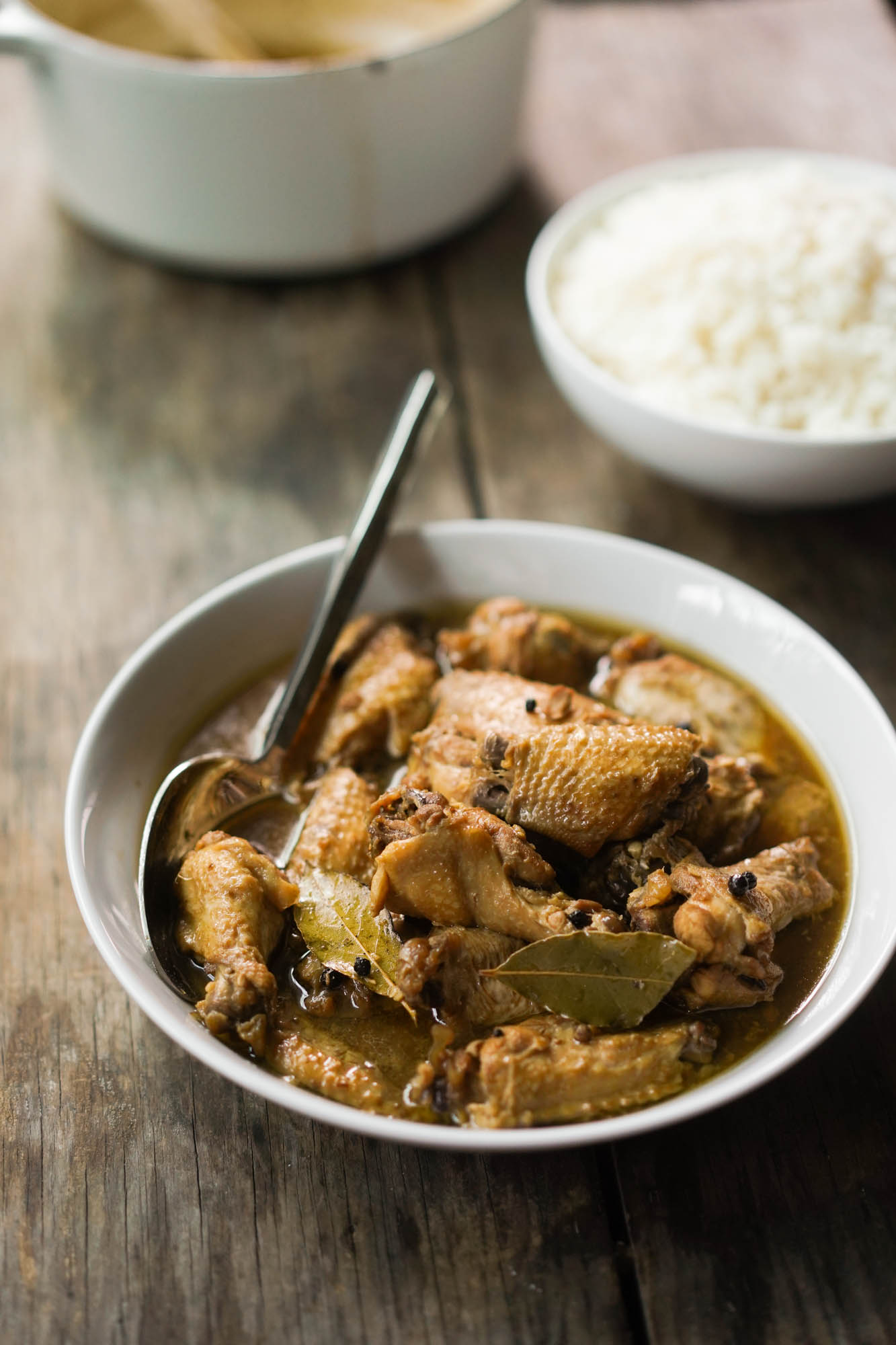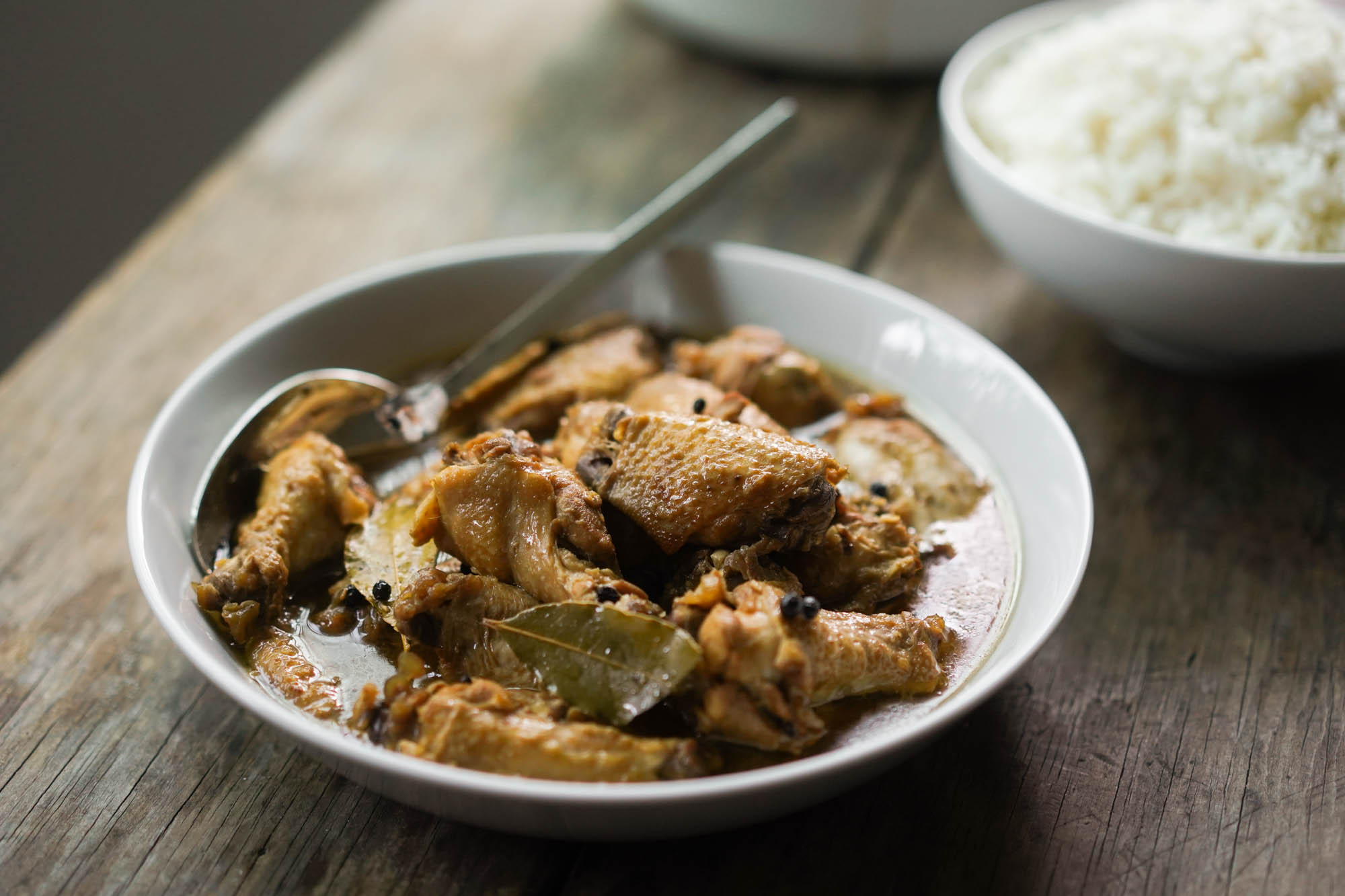
This chicken adobo, “adobong manok,” recipe will give you bright, peppery, and savory tender chicken that feels like a warm hug–it gets even better when you mix the adobo “sabaw,” or soup, with fresh steamed rice. It’s a classic Filipino comfort food that is easy to make at home for any day of the week. It’s no wonder it’s one of the Philippines’ most famous dishes just like chicken inasal, chicken tinola, and pork bbq skewers!
Not to be mistaken with Spanish style adobo that uses paprika and oregano, this Filipino version is something completely different. Filipino adobo is indigenous to the Philippines and each region has its own version, like pork adobo, fish adobo, shrimp adobo, and more. Adobo is basically a cooking process and dish that can include meats and vegetables that are marinated and cooked in a blend of vinegar, soy sauce, pepper, and garlic. Many regions add different ingredients too, like coconut milk or even turmeric. Chicken adobo is extremely similar to Vietnamese braised pork thịt kho, but with vinegar and a more peppery kick. When Spanish colonizers saw this cooking method, they noticed how Filipinos used vinegar to marinate meat, which was similar to the Spanish term for marinating or pickling, “adobar.” They named it “adobar de los naturales” or adobo of the natives. The inclusion of soy sauce was influenced by Chinese migrants later on.
Filipino adobo often tastes sour, salty, and a little sweet compared to Spanish adobo, which can be spicier and offers a different flavor profile based on the herbs and spices used like paprika. Chicken adobo is probably one of the most popular and well known versions of adobo. For this recipe, I like to stay with the traditional, simple ingredients that give some of the most flavorful, tender pieces of chicken.
Vinegar is one of the most important ingredients for this recipe and I would really recommend going to your local Filipino or Asian grocery store to buy cane sugar vinegar, like Datu Puti Sukang Maasim. Cane sugar vinegar differs from white distilled vinegar because it’s slightly less acidic and more mellow, whereas white distilled vinegar has a sharp and super pungent flavor profile. While you can use white distilled vinegar in chicken adobo, the pungent flavor might come out too strong and you will need to adjust the amount used in a recipe. If you can’t find cane sugar vinegar nearby, you can also substitute with white wine vinegar instead because it has a similar acidity and flavor profile.
I like to eat party wings and drumsticks for this recipe because I love eating bone-in chicken pieces (better flavor and fattier). These pieces also cook faster when braising in a stew. You can also use other pieces of chicken like thighs, my girlfriend’s mom chops up a whole chicken into smaller pieces–no waste there! Depending on the thickness of different pieces, you may need to adjust the cooking time–just check for tenderness and internal temperature while braising. Marinating the chicken is probably one of the most important parts of the adobo process because it helps to flavor and tenderize the meat. While I’ve seen recipes tout a 30 minute marinating process, I’ve marinated many chicken recipes (chicken karaage, Korean fried chicken, and cà ri gà) to know that the longer you marinate chicken, the better the flavor. For this recipe, I marinate the chicken for at least 3 hours to get a good amount of flavor, however, I would marinate overnight if I had enough time.
Here are some tips for cooking chicken adobo:
One of my favorite things about chicken adobo is that it gets better the day after! The flavors infuse the chicken overnight and it tastes even better.
